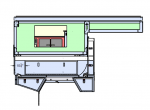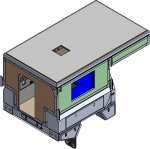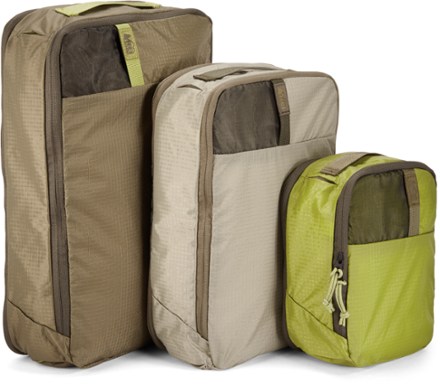Hi Shawn. What brand lithium was the one OEV offered for $500 that included an internal battery heating element? And how many amp hours? That seems like a crazy good deal if it's 100Ah battery with internal heating element. Then again, that was likely an 'upgrade' price and so is only the price difference between the cost of the AGM and the Lithium. Still, a good way to do it because you may not have a use for the AGM that it will now come with if you are going to change to a lithium battery.
Battleborn 100Ah with no element is $900. With built-in heating element is $1,050. Both are 12.75L × 6.875W × 9H inches. My no-element Battleborn just arrived though I have not installed it yet. Originally I was going to use a SOK battery as the tear-down reviews and tests have proven them a high quality yet economical battery. Unfortunately, both the 100Ah ($570 and 11.42L × 7.87W × 7.87H inches ) and 206Ah ($1,029 and 11.42L × 7.87W × 11.02H inches) SOK batteries will not fit into a stock CAMP-X battery box because they are too wide (7.87" compared to the Battlebornes 6.875" width). More specifically, they will fit inside the battery box, but are too big (wide) to put into the battery box. I have recommended to OEV that they implement an external battery box door to access the battery box. This would greatly simply battery removal and installation and allow a much larger battery to be installed. To install larger batteries currently, one has to cut out the battery box.
The SOK 206Ah would easitly fit within the battery box, but with the configuration, one can't move it in place without cutting out a good portion of the battery box. The smaller Battleborn 100Ah is my backup plan and the width and height are basically the same as the stock AGM battery that came with my camper, though it's a bit longer than the stock battery. That stock AGM was EXTREMELY tight coming out. But from my measurements and the fitment of a mocked up battery-sized model, the 100Ah Battleborn will fit. I might remove the breaker and shunt to give a bit more clearance when sliding it in, but the newer campers have the shunt and breaker tucked away over by the REDARC to give more clearance removing and installing a battery. A disappointment that I could not fit the 206Ah SOK and will have to settle for a 100Ah battery. I'm not willing to house the battery/batteries in the under-fridge cabinet because I need that for storage.
You are likely aware, but for other readers' info, one can draw from a lithium battery even when the battery is well below freezing. The issue is lithium will be damaged if charged while it is below freezing. That is why lithium batteries come with an internal Battery Management System (BMS) with internal temp sensors that won't allow inbound current if the cells are below freezing. BMS will also cut disconnect the battery if there other issues (overheating, overdrawn, overcharged, etc.). Some lithium batteries are now offered with the internal heating elements, that you mentioned, which will slowly warm the battery cells to above freezing to allow charging to occur in a sub-freeing environment. There are alternatives to buying a battery with an internal heating element. 12v heating elements are very economical and you can wire and switch one under any lithium battery in your battery box and it will do the same thing; warm your battery when the switch is turned on. Like the internally heated lithium, in extremely sub-freezing temps, it will can take an hour or two to get it up to a temp where the BMS will accept a charge. The simple/cheap 12v heating elements come in all shapes, sizes and wattage and will do the same thing as an internal element.
While actively using the camper, the interior will be above freezing and/or the battery will stay warm if you are drawing power from it and so you won't need to heat the battery. If one is in a situation where you are leaving the heat off all day long but want to ensure the battery stays warm enough so solar input, shore power or the alternator (while driving) can charge it, then one needs the battery to be over freezing and internal or external 12v heating elements are a good way to do that.
Keep in mind that the REDARC, when set to Lithium, will not charge if the battery box temperature is below freezing. So even though your battery may be above freezing and the BMS would allow charging, if the REDARC sensor detects below freezing, it will not send current to a lithium battery (not solar, not shore power, not truck power). I don't know if a heating element (internal to the battery or external underneath it) would keep the battery terminal (which is where the REDARC sensor is located) warm enough to keep the REDARC sensor happy. It may. Or you could trick the REDARC sensor by warming it which would then send REDARC current to the battery and then you could rely on the battery BMS to decide if the battery is warm enough to accept inbound current.
You'll also want to plug both battery box vent holes. They are not needed when using AGM or lithium batteries and are there in case a future user ever put in a standard flooded lead acid battery which must be vented to the outside. Plug those vents to keep the cold out of your battery box and have a better chance of the REDARC sensor allowing lithium charging and better chance of keeping our batteries above freezing. The battery is in the way of plugging those so do while swapping out the battery and the battery box is empty.




